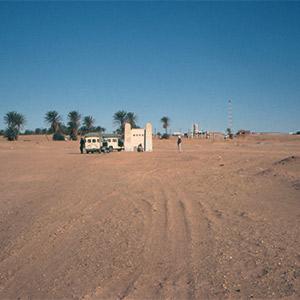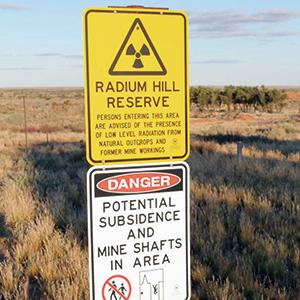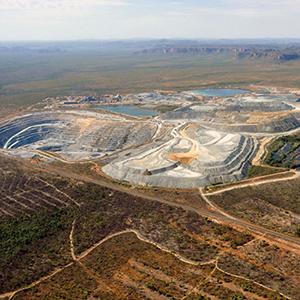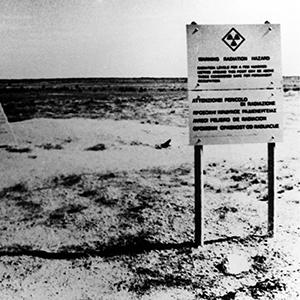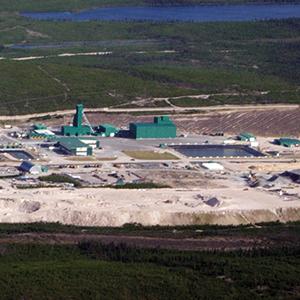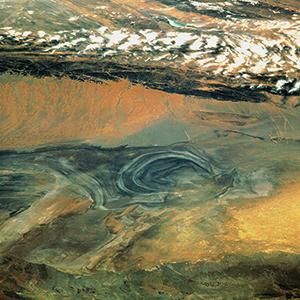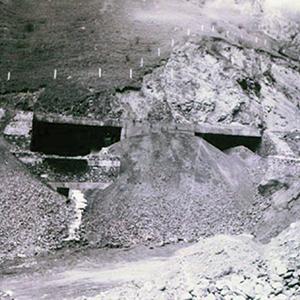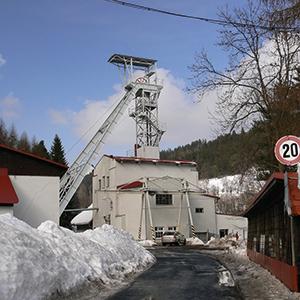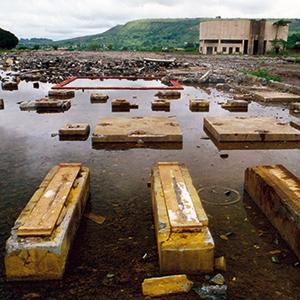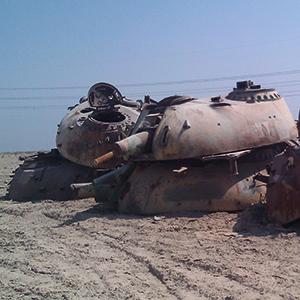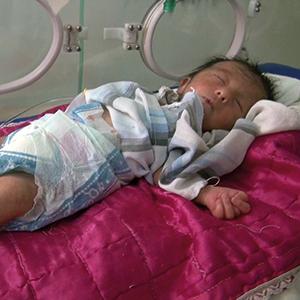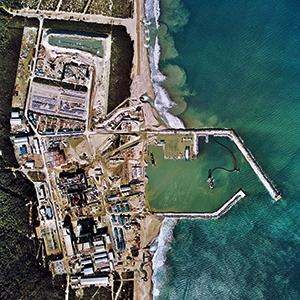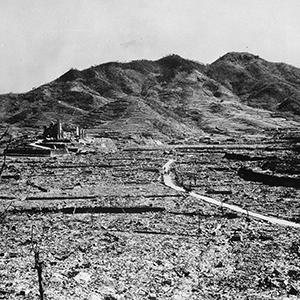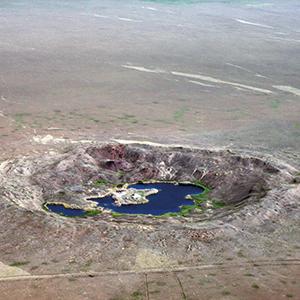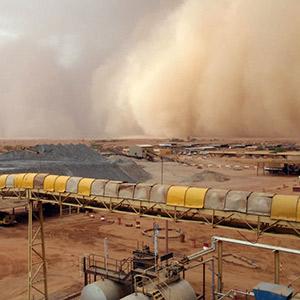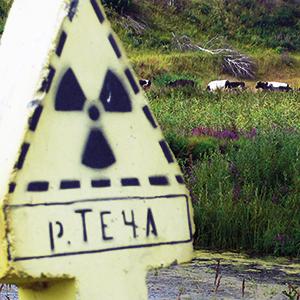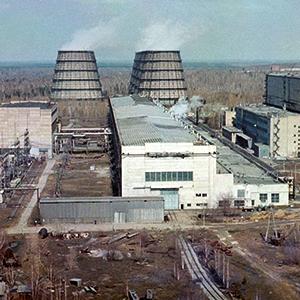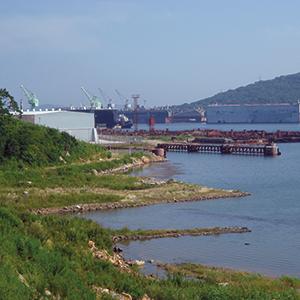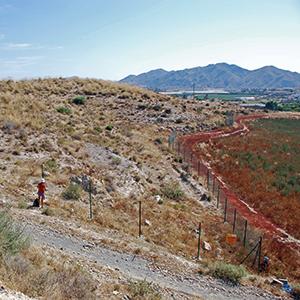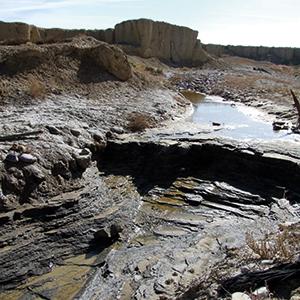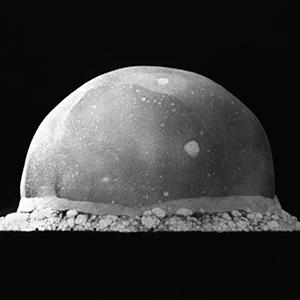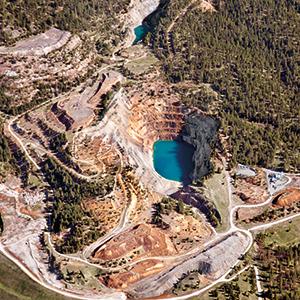Witwatersrand, South Africa

Inadequate controls and safety standards in the uranium mining industry in the Witwatersrand basin have resulted in an environmental catastrophe. Radioactive tailings and contaminated water are not just detrimental for the ecosystem in the region, but also represent a grave public health problem. At the same time, South Africa’s nuclear industry is a good example of the intangible connection between civil and military nuclear programs and the inherent proliferation risk of nuclear energy.
Photo: The underground mine Ezulwini is located on the edge of Westonaria, about 40 km from Johannesburg. © First Uranium
History
Uranium production in South Africa has generally been a by-product of gold mining. Ever since the gold rush of 1886, the Witwatersrand basin has been a major mining site. Today, this region, which roughly corresponds to Gauteng province, is home to more than 10 million people. With safety standards and production costs in South Africa significantly lower than in other countries, companies like AngloGold, Goldfields, First Uranium, DRD and Harmony are continuing to mine uranium in this populated region. The total uranium production of the Witwatersrand basin between 1952 and 1998 is estimated to be about 150,000 tons of refined uranium.
Until 1964, most of the uranium was exported to the U.S. and to Britain. But starting in the 1960s, South Africa began to construct its own nuclear weapons program. As a cover, two nuclear power plants were constructed at Koeberg, which began operation in 1984. At the same time, a secret uranium enrichment facility was set up at Valindaba, which produced enough highly-enriched uranium for six nuclear warheads. These weapons of mass destruction were officially never tested due to international pressure and were eventually dismantled and destroyed after the end of apartheid. Soon after that, South Africa joined the Nuclear Non-Proliferation Treaty. From then on, the state-owned Atomic Energy Corporation put its emphasis on the civil nuclear program.
Health and environmental effects
South Africa’s mining industry is relatively unregulated, which has led to high levels of radioactive exposure among the Bantu-speaking people who work in the mines and inhale radioactive particles. The general population is also exposed to radioactivity, however, from the mine’s six billion tons of tailings, which were distributed in ponds and heaps over a densely populated area of about 400 km². The radioactive particles seep into adjacent rivers. Contaminated water from flooded mines or sinkholes also act as major sources of uranium pollution affecting surface- and groundwater. The region of Wonderfonteinspruit in the western part of the basin has been identified as a site of significant radioactive pollution; in the Far West Rand goldfields alone, 50 tons of uranium are estimated to enter watercourses each year. South Africa’s Water Research Commission found that the uranium content of sediments found in dams, wetlands and the streambed in the Wonderfonteinspruit exceed permissible limits, with uranium concentrations up to 10,000 Bq/kg – five times the already high maximum level proposed by authorities. Natural uranium levels are between 7 and 60 Bq/kg. Radiation measurements of soil, air and sediments by the Department of Water Affairs and Forestry showed increased levels of radioactivity in many of the region’s residential areas such as Carletonville, Westonarea, Khutsong, Kagiso and Randfontein. Despite massive environmental contamination from uranium mining in Witwatersrand, no epidemiological studies have been undertaken so far. Studies from other uranium mining centers in Canada and Germany found long term effects such as infertility, neurological damage, cancer and birth defects. More information can be found on the corresponding posters in this exhibition.
Outlook
While past uranium mining projects will continue to pose an environmental and health threat for generations to come, companies such as AngloGold are continuing to expand mining operations in the Witwatersrand basin. Their disregard for the environment and health has been criticized by numerous NGOs. The recently released study “Uranium from Africa – mitigation of uranium impacts on society and environment” points out the country’s failure to reduce the dangerous impacts of uranium mining activity and criticizes the National Nuclear Regulator, the agency meant to safeguard the public against mining related radiation, as ineffective and overstretched. The environmental and public health impact of uranium mining in South Africa cannot be properly assessed without large scale epidemiological studies. Even without these, it is evident, however, that the vulnerable population of the townships is bearing the brunt of the problem. These people are also Hibakusha – they are forced to live with radioactive contamination and to suffer health effects, all because of their country’s nuclear ambitions.
References
- “Uranium 1999 Resources, Production and Demand.” Joint report of IAEA and OECD, 2000, p.251ff.
- Fig D. “Uranium Road – Questioning South Africa’s Nuclear Direction.” Jacana Media, Johannesburg 2005.
- Liefferink M. “Poisonous legacy of Gold and Uranium Mining.” Website of the Coalition against Nuclear Energy (CANE), September 10, 2007. www.cane.org.za/uranium/poisonous-legacy-of-gold-and-uranium-mining
- Winde et al. “Gold tailings as a source of waterborne uranium contamination of streams.” Water SA, Vol.30 (2) 2004: 22. www.ajol.info/index.php/wsa/article/view/5069
- Coetzee et al. “Reliance on existing wetlands for pollution control around the Witwatersrand gold/uranium mines.” In: “Uranium in the Aquatic Environment.” Springer, Heidelberg 2002, pp 59-64. http://link.springer.com/chapter/10.1007%2F978-3-642-55668-5_6
- Winde F. “Uranium pollution of water resources in mined-out and active goldfields of South Africa – a case study in the Wonderfonteinspruit catchment on extent and sources of U-Contamination and associated health risks.” Abstracts of the International Mine Water Conference Proceedings, October 2009. www.imwa.info/docs/imwa_2009/IMWA2009_Winde.pdf
- “Umweltradioaktivität und Strahlenbelastung.” German Federal Ministry for Environment, Conservation and Reactor Safety, 1995. http://atlas.umwelt.hessen.de/servlet/Frame/atlas/radioakt/gamma_txt.htm
- “Uranium from Africa – Mitigation of uranium mining impacts on society and environment by industry and governments.” Report of SOMO und WISE, June 2001. http://somo.nl/publications-en/Publication_3688/at_download/fullfile







